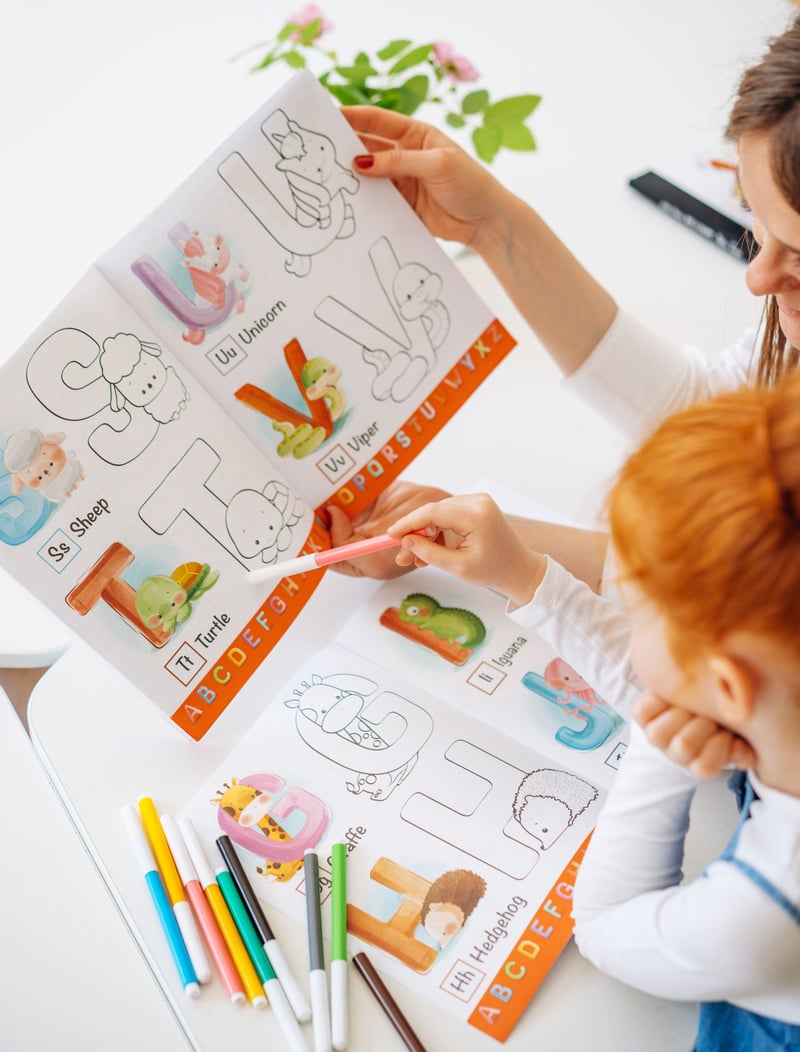
In Australian schools, children are taught to read phonetically: They learn their letters and the sounds they make – both individually and in combination with other letters (eg ‘ch’, ‘th’, ‘sh’). In this way, they learn how to read and build words from their component phonemes.
Lower primary students are also tasked with learning a range of whole words, such as ‘the’ and ‘all’. They are usually given a number of these sight words to practice and memorise each week for homework.
Why do children need to learn sight words?
Apart from the fact that only 50% of the English language can be read phonetically, about half of all reading texts are made up of the same 100 high-frequency words:

The 100 most frequently used words. Click for document.
If children can learn and recognise these words instantly, they can concentrate on deciphering the other 50% of words in any given text. Automatic word recognition is a significant component of being able to read fluently, and having their sight words down pat instils confidence in young readers.
King’s uses Rainbow Words from Prep to Year 2 to improve reading, increase fluency and develop comprehension. Rainbow Words comprises 300 high-frequency words which make up 70% of all reading texts. In Stage One, students learn to read and recognise all 300 words. They learn a colour coded group of words at a time and, once they have mastered these, progress to the next colour group. In Stage Two, students learn to spell and write all 300 words.
While some children learn sight words at a rate of knots, others struggle to remember and differentiate between them. How can parents help their young child with sight words at home?
Repetition, repetition, repetition
Yes, it's obvious, but the more exposure to sight words your young child has, the more opportunities s/he has to learn them.
- Include the whole family
Get Mum, Dad, older siblings and grandparents involved. Play sight word games together. - Memory wall
Use a fridge, notice board, white board or other prominent bit of wall space to display the words your child is working on at the moment. Review it regularly. - Recap at bedtime
Have a quick review of sight words after your child's bed time story. I used to blue tack my child's sight words to the wall by his bed to give him something to look at if he couldn't sleep. (There was no escape from those sight words!)
Practice in a variety of ways
Everyone has a different way of remembering things. Some people are more visual, some learn by listening, others by doing. Things 'stick' even more when we encounter them in a range of media. Mix things up and combine different strategies to maximise your child's sight word recall.
Do it in short bursts
There's no need to labour sight word practice. You only need to go through them for a few minutes at a time. Little and often rather than one long session every day.
Use lower case letters
Most of the words you will ever read will be in lower case. Capitals are also more difficult to read. So show your child the word 'down' rather than 'DOWN' when practicing sight words. The exception will be proper nouns, where the first letter is capitalised (eg, 'I', 'England', 'Sunday').
Matching
Children can learn to recognise and decipher words by matching up like with like. Try some of these activities:
Sight word dominoes
Make your own with black card and white pen.
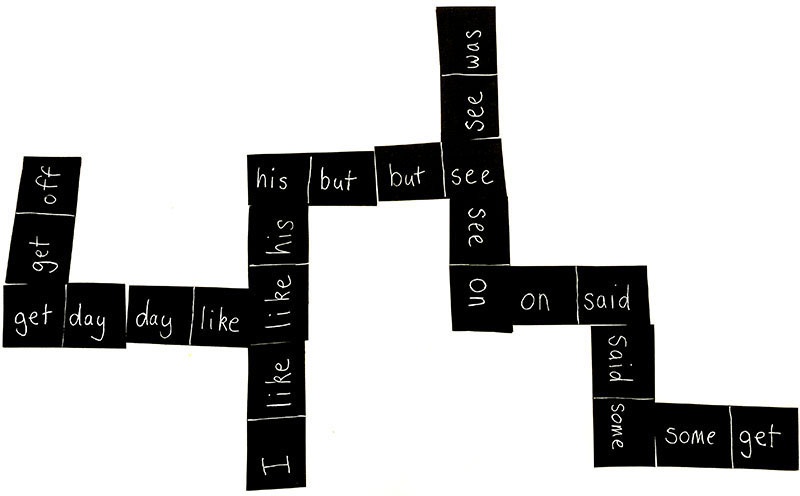
Memory match
Place two of each sight word face down in a grid. Each player takes turns to turn over two of the sight words. If they get a matching pair, they get to keep them. If not, they are turned back over and the next player has their go. The winner is the playing with the most matching pairs.
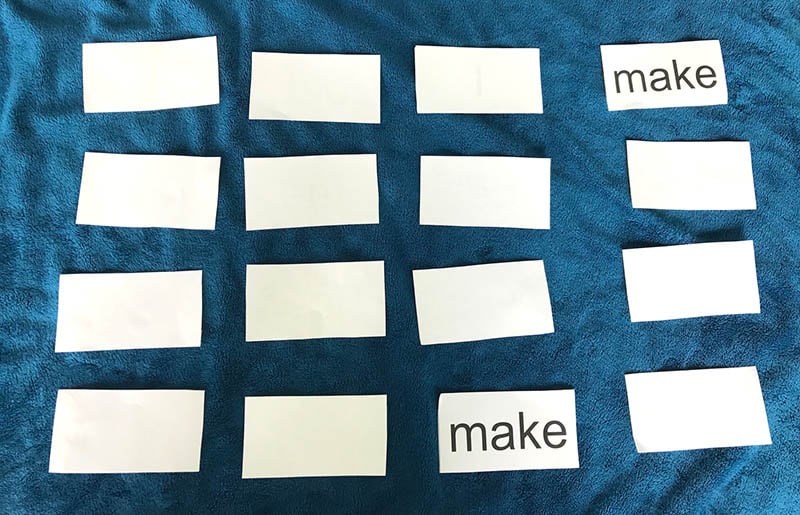
Sight word bingo
Make your own 'bingo' cards containing nine sight words in rows and columns. Place a number of individual sight words face down on the table. Players take turn to pick up a sight word and see if matches anything on their bingo card. If it does, they place it on matching word on their bingo card. If not, the sight word is turned back face down. The winner is the player who gets three sight words in a row (horizontal, vertical or diagonal).
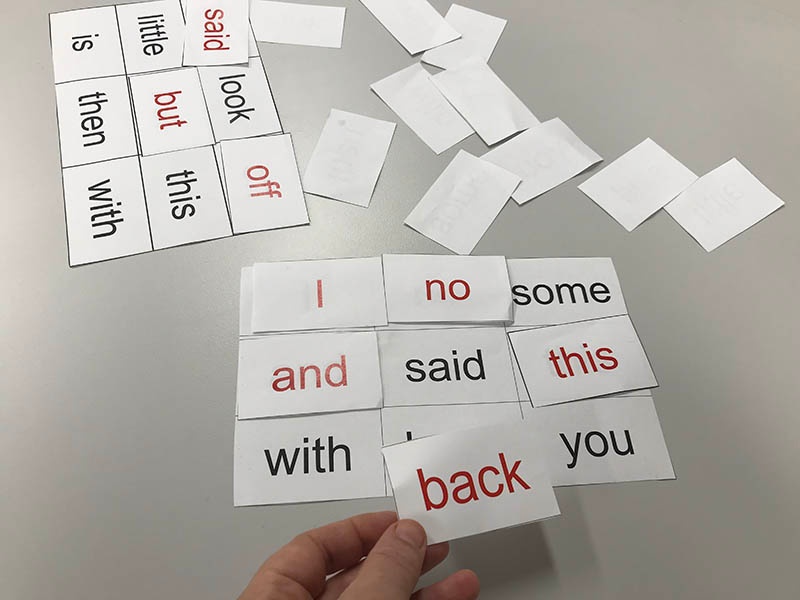
Match up letters
Build up words with magnetic letters or pegs (see examples below).

Count the letters in words
'Look' has four letters and 'looked' has six. 'Off' has three and 'of' has two. Playing a letter counting game may help your child recognise and decipher their sight words more easily.
Point out sight words everywhere
Common words are all over the place! Teach your child to be observant and notice the sight words around them.
- Look for words around you - on signs, in books, on toys, in computer games
- Do a 'word search' in a newspaper or magazine: Pick one to three sight words (eg 'old', 'Mr' and 'he'). Give your child a highlighter pen (or different coloured highlighters for each sight word) and get them to highlight every instance of those sight words in the newspaper text.
- Ask your child to pick out any words they recognise on cafe menus while you are waiting for your food.
Copy and write
Physically writing down a sight word forces your child to focus and remember how the word is put together. It will also help with spelling later on. Use a white board and marker, write in sand or form letters from play dough.
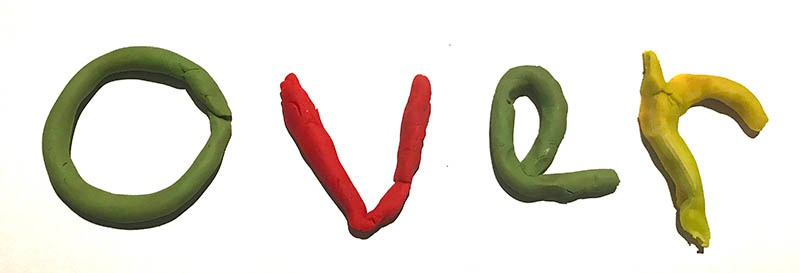
Learn words in context
- Label things, eg in a child's painting of his family, label 'Mum', 'Dad', 'me'. Wrap up a couple of items in your child's lunch box and put their name on the wrapping paper (eg 'apple', 'water').
- Write little notes for your child and put them in their lunchbox or under their bedroom door, eg ‘I love you’, ‘See you after school’, ‘Have a good day’. It's exciting for kids as they start to put things together and make sense of those squiggles. Add little pictures to go with them.
- Pick a few sight words that could go together and see if your child can make a sentence out of them, eg "don't come back", "it was an old house", "the children looked like very big people"
Try grouping words
Find sight words with similar sounds, letters or constructions and learn them as a set of words to boost recognition. For example,
- ‘wh’ words (‘what’, ‘why’, ‘where’)
- no, go, so
- in, is, it, it’s
Play therapist
If your child is struggling with a specific sight word, ask then which part of the word they are finding difficult to remember or what is confusing them. For example, after learning 'what' and 'when', your child might not be able to get their head around why 'who' doesn't start with a 'w' sound.
Ask them how they remember other words and what they notice about them. This helps you find out how your child's mind processes information.
Make connections
Look for tricks, clues and associations to help your child remember - and and get your child to identify them too. For example,
- 'no' backwards is 'on'
- 'me', 'be' and 'he' all have the same sound and the same last letter
- 'off' is 'of' with an extra 'f'
- the two 'o's in 'look' resemble eyes - draw a couple of dots in each to emphasise.
- try saying irregular words out loud phonetically to emphasise that they are not spelt like they sound, eg pretty as “prehtt- ee” or was as “wass”
- use media references to reinforce familiar words, eg a picture of Dr Who with the character's name clearly labelled to help your child remember the word 'who'
Be positive and have fun
Yes, it can be frustrating if your child still can't remember the word 'the' after practicing it for the best part of a month, or if she seems like she's not trying when she repeatedly confuses 'I' and 'and'. Be patient. Don't get infuriated with your child. It is so important to make sight word learning a pleasant and enjoyable task that your child will want to return to. If they are criticised, ridiculed or feel that this is a chore for their parent, they may develop negative associations that will affect their learning.
Have fun with sight words and take a playful, relaxed approach. Try saying the words out loud in silly voices, with funny accents or sing them. See if your child can identify the word when it's upside down or on its side. Act out the word (eg 'big', 'little') or embellish with comical facial expressions. Praise your child's effort and be encouraging.
How do you help your child learn their sight words? Share your tips.











